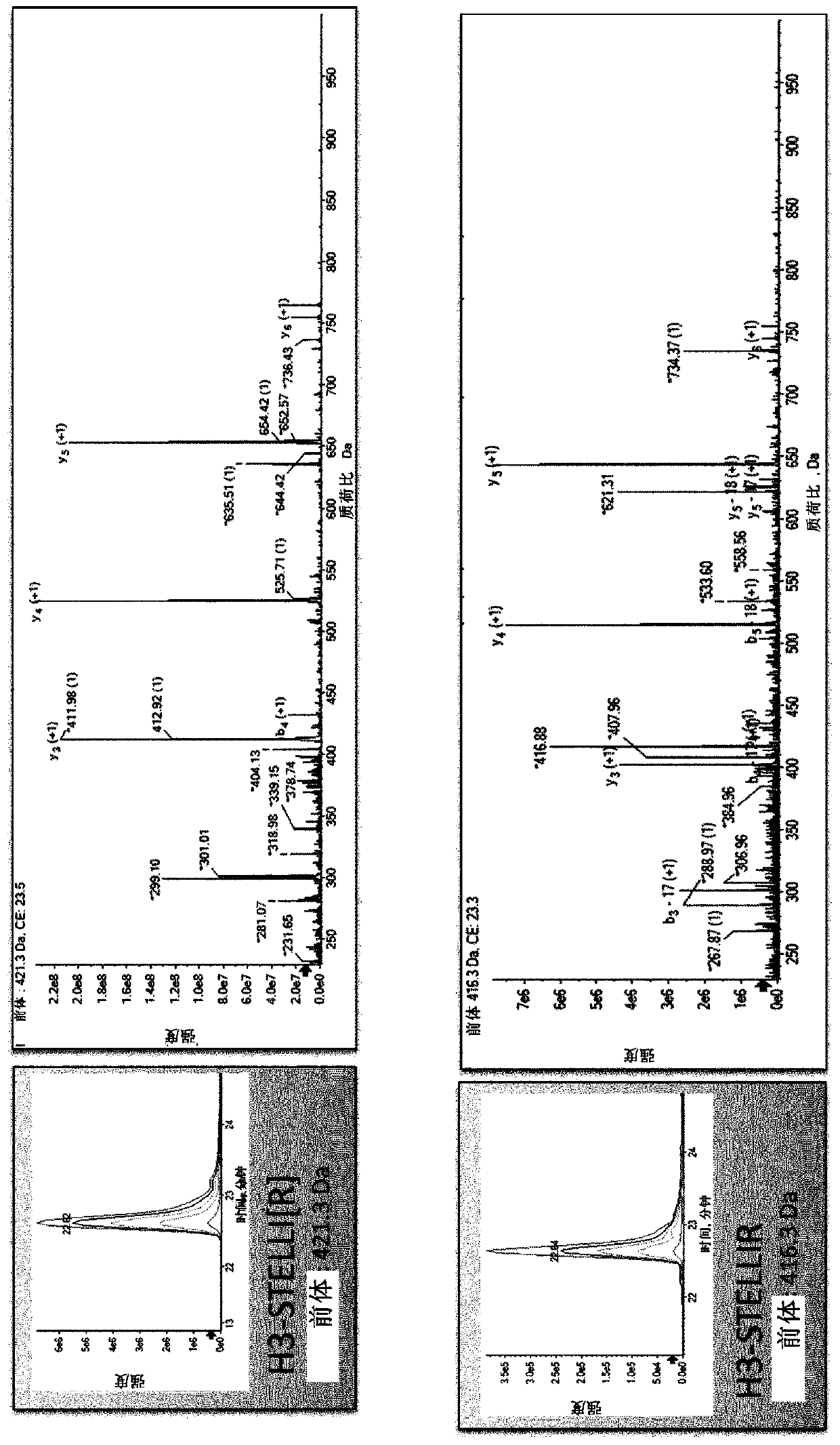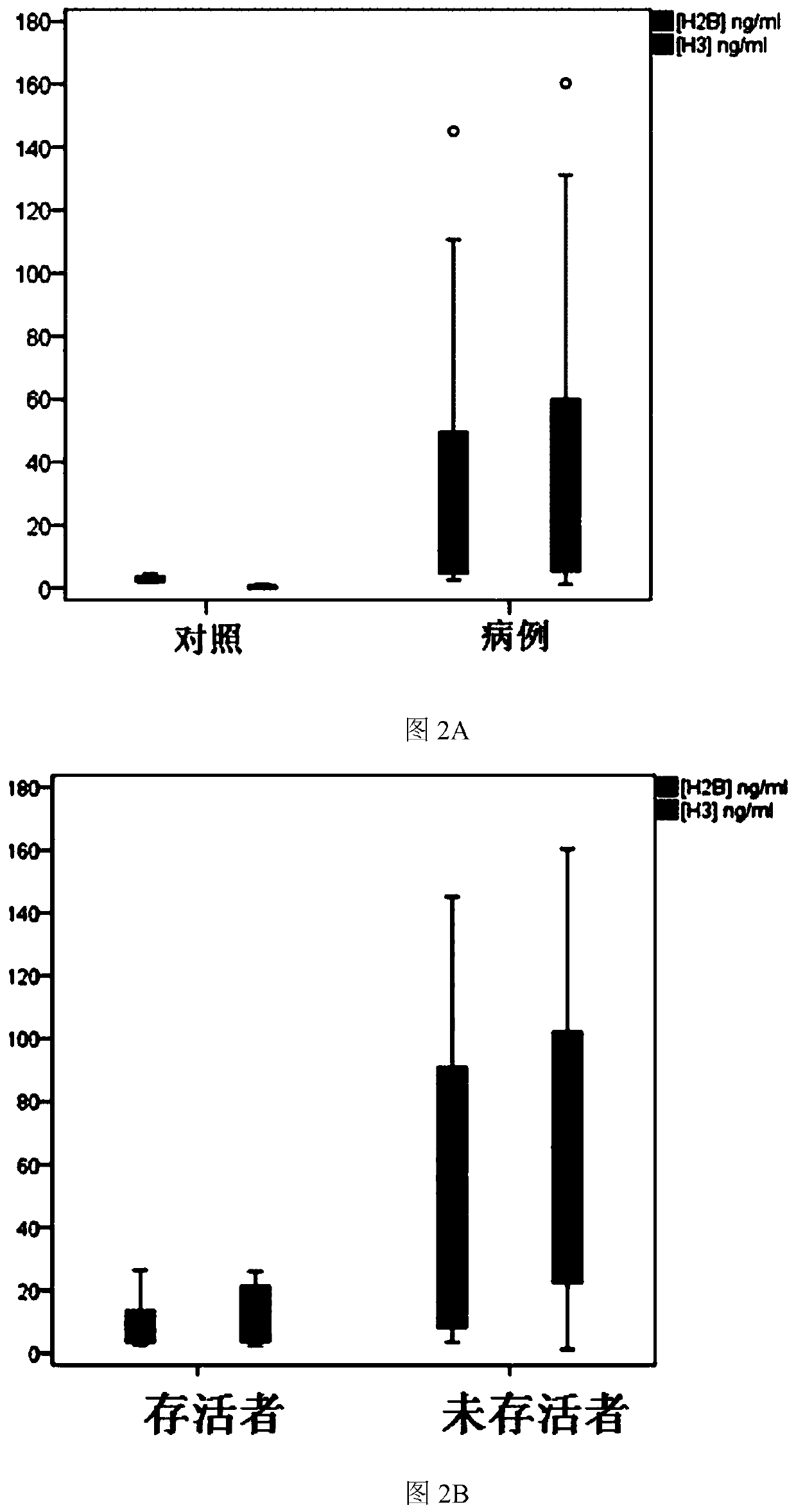Mass spectrometry-based methods for the detection of circulating histones h3 and h2b in plasma from sepsis or septic shock (SS) patients
A septic shock, circulatory group technology, applied in the field of disease diagnosis/prognosis, medicine, can solve the problems of reproducibility difference, high error range, erroneous results, etc.
- Summary
- Abstract
- Description
- Claims
- Application Information
AI Technical Summary
Problems solved by technology
Method used
Image
Examples
Embodiment 1
[0087] Example 1. Results
[0088] General description of the queue
[0089] A total of 17 patients who were clinically diagnosed with SS on admission to the medical ICU were analyzed. The median age was 67 years (range, 37 to 85 years), and male patients accounted for 67% of cases. The median APACHE II score was 25 (14-44), and the median SOFA score was 10 (3 to 19).
[0090] Table 1 shows the clinical characteristics of the patients.
[0091]
[0092]
[0093]
[0094] SD = standard deviation, APACHE = acute physiology and chronic health assessment, SOFA = sequential organ failure assessment, SSTI = skin and soft tissue infection, MDR = multidrug resistant organisms, RRT = renal replacement therapy, ICU = intensive care unit, LOS = length of residence CRP = C-reactive protein, PaO2 / FiO2 ratio = partial pressure of arterial oxygen to fraction of inspired oxygen
[0095] a MDR (extended-spectrum beta-lactamase-producing Escherichia coli and Meticilin-resistant...
Embodiment 2
[0116] Example 2. Differentiated diagnosis
[0117] A total of 40 samples were analyzed and the following group distribution was included in the study: 11 controls selected in the ICU without infectious conditions (non-septic ICU control patients), 11 controls selected from the general healthy population, 8 septic cases of septic shock and 10 cases of septic shock.
[0118] For histone H2B, the average levels found in the 40 plasmas were as follows (Table 2):
[0119] Group [H2B]ng / mL (CI 95%) ICU control group 132.63(92.68-172.59) common control group 108.87(84.23-133.50) sepsis 219.63(162.05-277.21) septic shock 1305.32(587.42-2023.23)
[0120] Figure 5 The results are shown in , where the levels of circulating histone H2B in plasma from controls (ICU and general population), sepsis and septic shock patients are shown. Box-and-whisker plots represent H2B levels in the four groups. Boxes indicate interquartile ranges, horizontal ...
PUM
 Login to View More
Login to View More Abstract
Description
Claims
Application Information
 Login to View More
Login to View More - R&D
- Intellectual Property
- Life Sciences
- Materials
- Tech Scout
- Unparalleled Data Quality
- Higher Quality Content
- 60% Fewer Hallucinations
Browse by: Latest US Patents, China's latest patents, Technical Efficacy Thesaurus, Application Domain, Technology Topic, Popular Technical Reports.
© 2025 PatSnap. All rights reserved.Legal|Privacy policy|Modern Slavery Act Transparency Statement|Sitemap|About US| Contact US: help@patsnap.com



